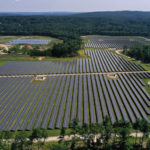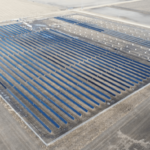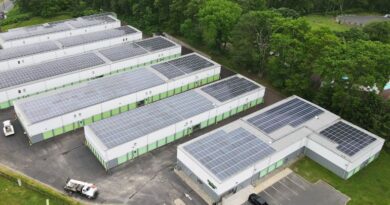Illinois Commerce Commission approves detailed roadmap to reach 40% renewables by 2030 The plan includes steps to actualize low-income and community solar goals and more.
The Illinois Commerce Commission (ICC) on July 14 approved the Illinois Power Agency’s 2022 Long-Term Renewable Resources Procurement Plan (LTRRPP). The 2022 Plan was developed pursuant to the Climate and Equitable Jobs Act (CEJA), the landmark climate justice and energy bill passed last fall. This decision comes after the Environmental Law & Policy Center, the Natural Resources Defense Council and Vote Solar intervened in the docket and submitted comments calling for improvements to low-income solar programs, structural adjustments to renewable energy procurement and follow-through on CEJA’s equity provisions.
The ICC is charged with ensuring Ameren Illinois Company (Ameren), Commonwealth Edison Company (ComEd), and MidAmerican Energy Company (MidAmerican) procure renewable energy credits (RECs) for RPS compliance obligations. That RPS has recently expanded to 40% renewable energy by 2030 thanks to CEJA — a far cry from the current renewable energy percentage of around 8%. The LTRRPP provides a pathway to compliance.
“Our move toward renewable energy should be fast, safe, reliable — and available to everyone, not just those who can afford it,” said Erica McConnel, staff attorney at the Environmental Law & Policy Center. “This plan is wonky, technical, and very, very in the weeds, but it is essential to turn CEJA’s promises into Illinois’ future.”
The plan outlines how the state will expand the low-income solar program, Illinois Solar for All, with a dedicated $70 million now available each year. This program is designed to provide solar to low-income customers and critical need facilities, such as nonprofits and public facilities, at no upfront cost and with mandatory energy savings. The plan also creates two new pilot programs for the Illinois Solar for All program, improving the state’s ability to deliver solar savings to low-income households. One pilot program will help pay for electrical and roof repairs needed for some low-income families to install rooftop solar. The other program will create a better user experience for low-income customers and project developers by streamlining onboarding and reducing customer acquisition costs.
“After several years of the Illinois Solar for All residential program failing to reach their goals, the new Plan provides the incentives and structure needed for over a thousand low-income families to see significant solar savings each year,” said John Delurey, Midwest director at Vote Solar. “The $70 million a year for targeted low-income solar installations will lower energy costs and expand energy resilience to families, nonprofits, and low-income communities across the state.”
The plan also provides structure and guidance for the 667 megawatts of distributed solar energy that CEJA will enable through the Adjustable Block Program. In addition to expansions of the three existing subprograms — one for small rooftop projects, one for large rooftop projects, and one for community solar — the plan informs the creation of three new subprograms required by CEJA. The new Community-Driven Community Solar program will ensure community engagement and ownership in community solar programs, the Public Schools program creates new opportunities for schools to pursue solar savings, and the Equity Eligible Contractor program creates designated funding and additional support for disadvantaged businesses to develop solar projects.
Further, the LTRRPP establishes formal processes for CEJA’s labor and standards — including prevailing wage requirements and minimum diversity and equity benchmarks for all renewable energy projects. IPA will conduct additional stakeholder engagement to fine-tune the requirements.
“This plan is the roadmap to reaching our renewable energy goals,” said Toba Pearlman, senior attorney and renewables energy advocate at NRDC. “We are ready and excited to start seeing CEJA build more clean energy.”
The LTRRPP serves as a guidebook for CEJA’s implementation and application. Now, program implementers will take the plan and create a detailed proposal on how renewable energy project developers and customers can participate in the incentive programs. The IPA also has 60 days to submit a compliance file based on the Plan. The Illinois Adjustable Block Program and Solar for All Program incentives will reopen again in Fall, likely by September.
News item from Vote Solar
<!–
–>
Original Source: https://www.solarpowerworldonline.com/2022/07/illinois-commerce-commission-roadmap-40-percent-renewables-2030/












